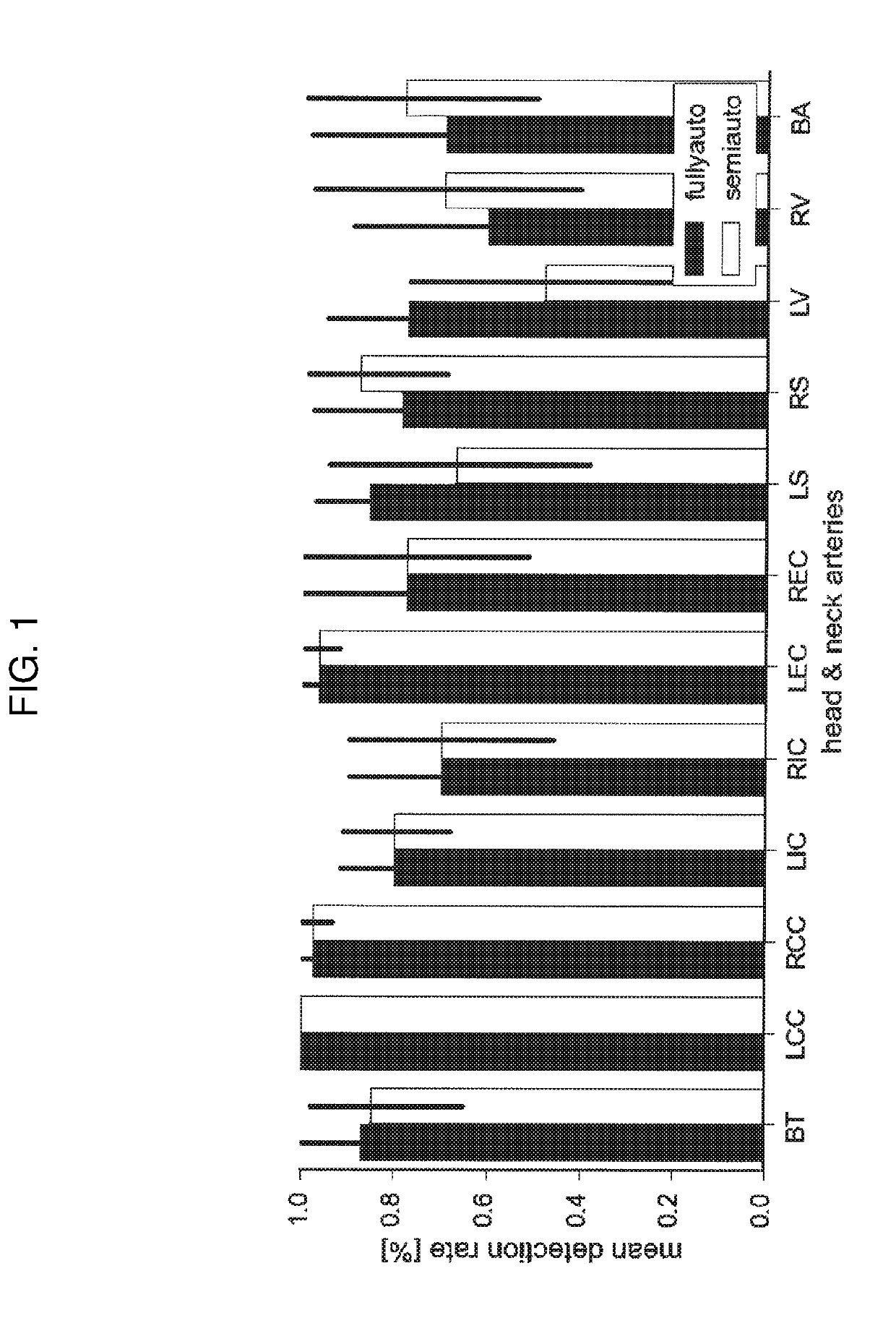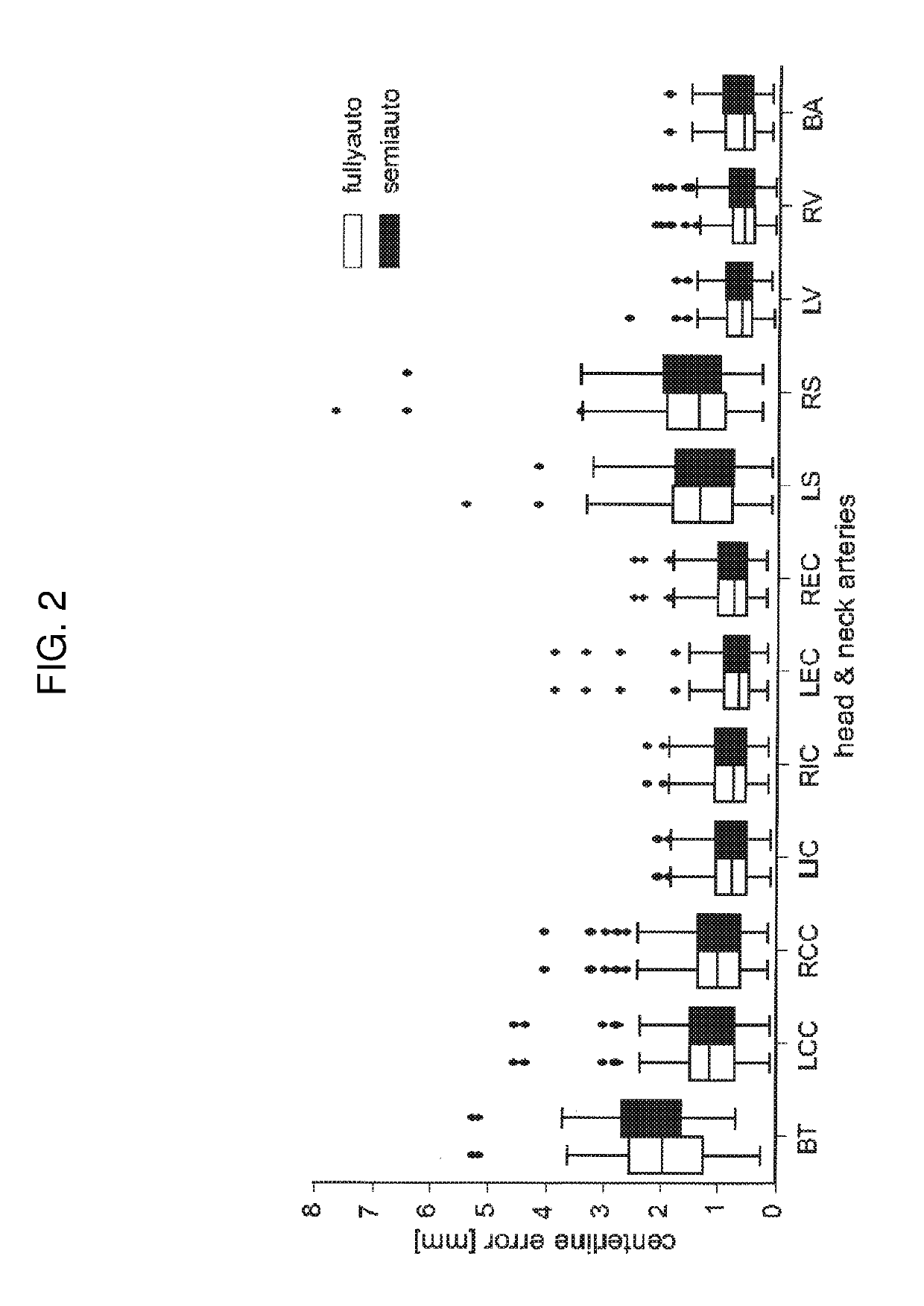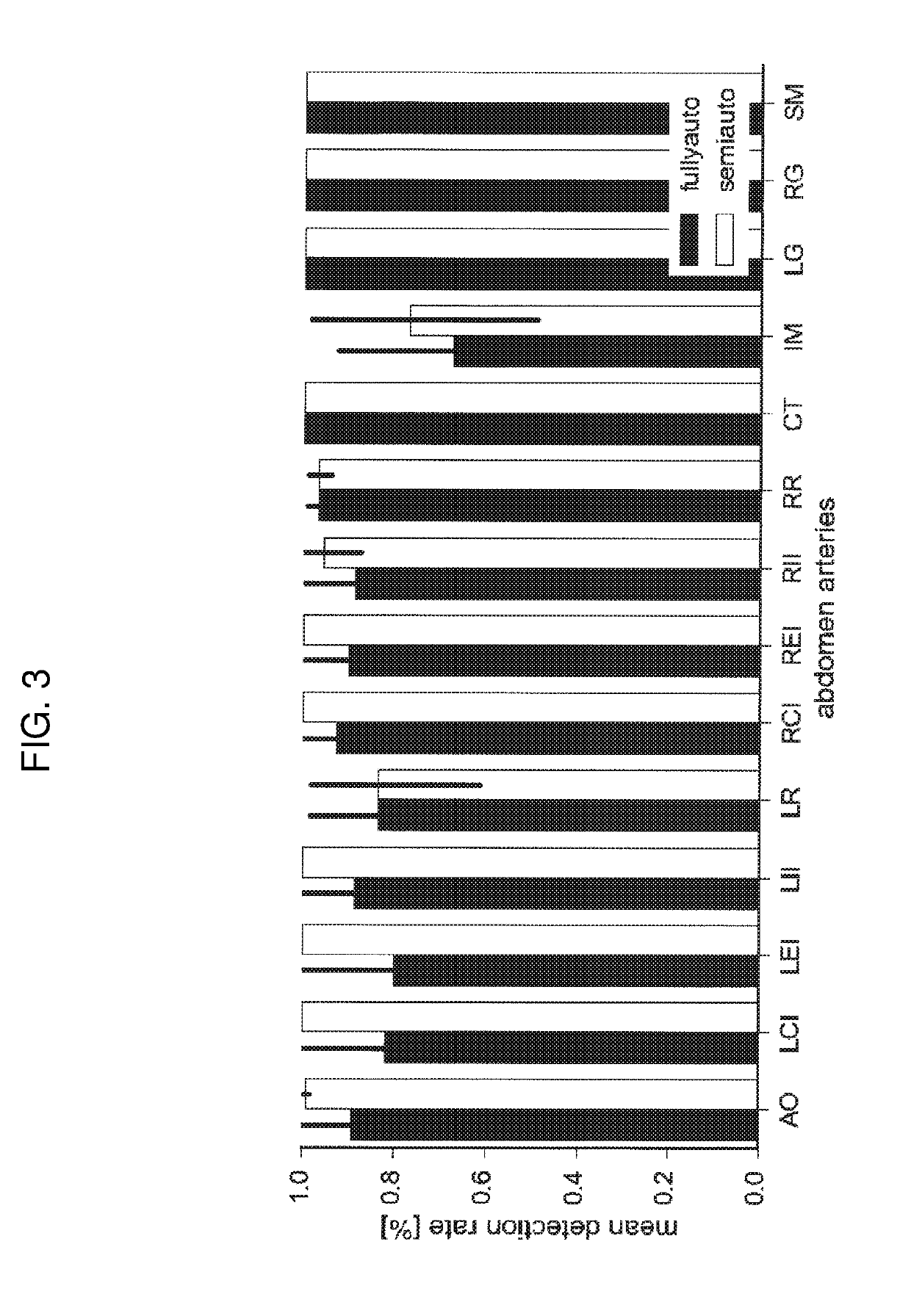Method for automatically detecting systemic arteries in arbitrary field-of-view computed tomography angiography (CTA)
a computed tomography and automatic detection technology, applied in the field of medical imaging, can solve the problems of poor contrast opacification, difficult artery extraction task, limited vessel assessment on cta, etc., and achieve the effect of accuracy and speed
- Summary
- Abstract
- Description
- Claims
- Application Information
AI Technical Summary
Benefits of technology
Problems solved by technology
Method used
Image
Examples
Embodiment Construction
[0042]In the following detailed description, reference is made in sufficient detail to practice the embodiments explained below by those skilled in the art.
[0043]Arteries vary in diameter and length depending in their position in the human body. More than that, the geometry of arterial tree parts differs from one body region to another. For that reason in one embodiment of our invention, the vessel tracking framework starts with detection of the body region of the CTA (computed tomography angiography) scan and adjusts the further steps accordingly. Major vessel detection performance improvements have been proven which can be attributed to the implementation of this body region detection as a first step. Possible vessel seed positions in the whole scan are detected at the next step. Underlying vessel structures are then tracked via vessel model matching starting from the seed positions. The tracked segments are finally connected to an arterial tree by a tree growing algorithm from an...
PUM
 Login to View More
Login to View More Abstract
Description
Claims
Application Information
 Login to View More
Login to View More - R&D
- Intellectual Property
- Life Sciences
- Materials
- Tech Scout
- Unparalleled Data Quality
- Higher Quality Content
- 60% Fewer Hallucinations
Browse by: Latest US Patents, China's latest patents, Technical Efficacy Thesaurus, Application Domain, Technology Topic, Popular Technical Reports.
© 2025 PatSnap. All rights reserved.Legal|Privacy policy|Modern Slavery Act Transparency Statement|Sitemap|About US| Contact US: help@patsnap.com



